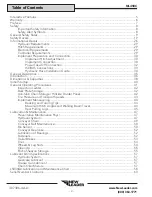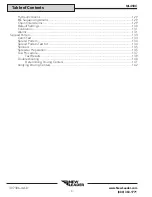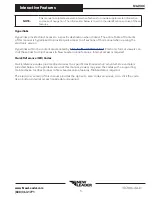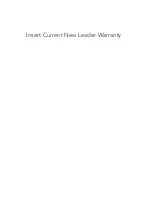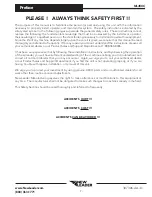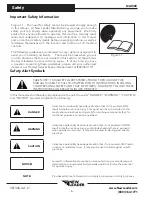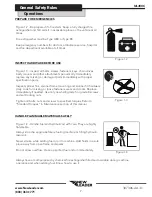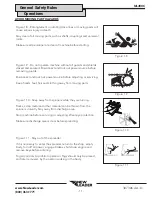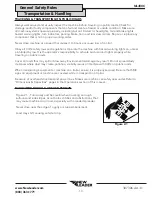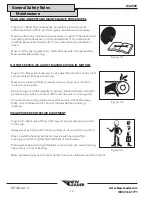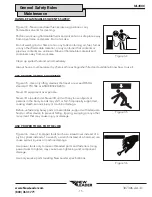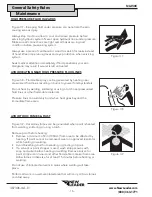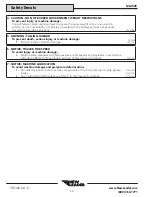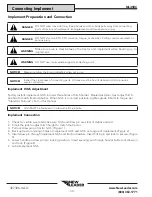
- 16 -
www.NewLeader.com
(800) 363-1771
307306-AA-D
NL450C
Header
HIGH PRESSURE FLUID HAZARDS
Figure 3.7 - Escaping
fl
uid under pressure can penetrate the skin
causing serious injury.
Always stop machine, allow to cool and relieve pressure before
servicing hydraulic system. Never open hydraulic lines under pressure.
Make sure all connections are tight and all hoses are in good
condition before pressurizing system.
Always use a piece of cardboard or wood to search for leaks instead
of hand. Wear impervious gloves and eye protection when servicing
system.
Seek medical attention immediately if
fl
uid penetrates your skin.
Gangrene may result if wound is left untreated.
Figure 3.7
AVOID HEATING NEAR HIGH PRESSURE FLUID LINES
Figure 3.8 - Flammable spray can be generated by heating near
pressurized
fl
uid lines, resulting in burns to yourself and bystanders.
Do not heat by welding, soldering or using a torch near pressurized
fl
uid lines or other
fl
ammable materials.
Pressure lines can suddenly burst when heat goes beyond the
immediate
fl
ame area.
Figure 3.8
AVOID TOXIC FUMES & DUST
Figure 3.9 - Hazardous fumes can be generated when paint is heated
from welding, soldering or using a torch.
Remove paint before heating:
• Remove a minimum of 4 in (100mm) from area to be affected by
heating. If paint cannot be removed, wear an approved respirator
while heating or welding.
• Avoid breathing dust from sanding or grinding on paint.
• If a solvent or paint stripper is used, wash stripper away with
soap and water before heating or welding. Remove solvent or
paint stripper containers and other
fl
ammable material from area.
Allow fumes to disperse for at least 15 minutes before heating or
welding.
Do not use chlorinated solvents in areas where welding will take
place.
Perform all work in a well-ventilated area that willl carry all toxic fumes
and dust away.
Figure 3.9
Maintenance
General Safety Rules

